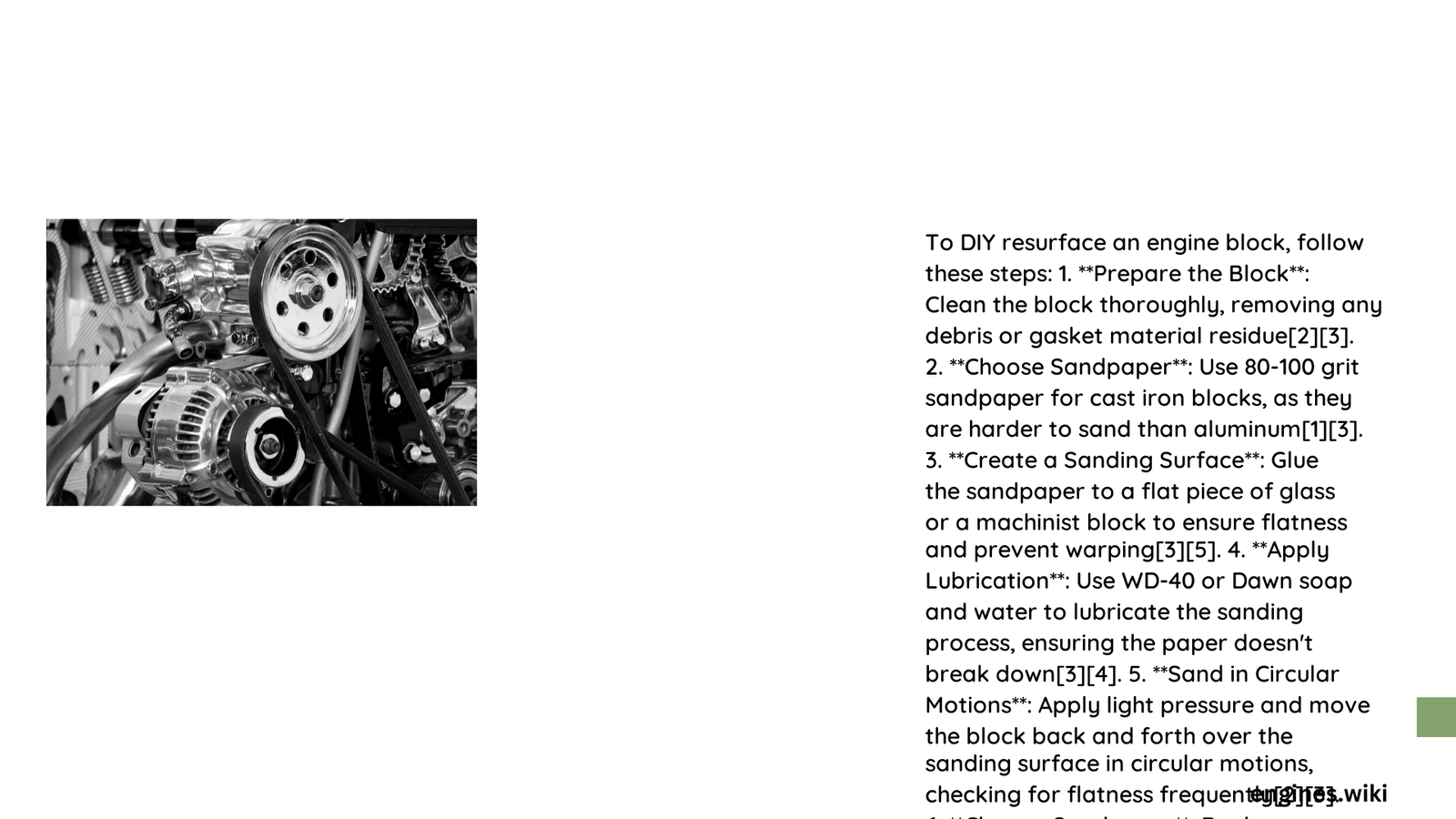Resurfacing an engine block at home requires precision, specialized tools, and technical knowledge. This comprehensive guide will walk you through the intricate process of DIY engine block resurfacing, helping you restore your engine’s performance and extend its lifespan without expensive professional services. Whether you’re a seasoned mechanic or an ambitious DIY enthusiast, understanding the nuanced techniques of engine block resurfacing can save you significant time and money.
What Tools Do You Need for DIY Engine Block Resurfacing?
Essential Precision Measurement Tools
- Dial Calipers: Measure surface flatness
- Torque Wrench: Ensure precise reassembly
- Surface Gauge: Check dimensional accuracy
Recommended Resurfacing Equipment
| Tool | Estimated Cost | Precision Level |
|---|---|---|
| Manual Milling Machine | $500 – $2,000 | High |
| Surface Grinder | $300 – $1,500 | Very High |
| Sanding Blocks | $20 – $50 | Medium |
How to Prepare Your Engine Block for Resurfacing?

Comprehensive Disassembly Process
- Remove engine block from vehicle
- Clean thoroughly using industrial-grade degreaser
- Inspect for visible damage or wear
- Document existing measurements
Critical Inspection Checklist
- Surface flatness tolerance: ≤ 0.001 inches
- Check for warping or structural damage
- Evaluate cylinder wall condition
- Measure deck height and alignment
What Are the Step-by-Step Resurfacing Techniques?
Precision Milling Method
- Set up milling machine at exact specifications
- Remove minimal material (0.002-0.005 inches)
- Maintain consistent cutting depth
- Use coolant to prevent thermal expansion
Manual Sanding Technique
- Start with coarse-grit sandpaper (80-120 grit)
- Progress through increasingly fine grits
- Use flat sanding block for even pressure
- Maintain consistent circular/linear motion
What Safety Precautions Should You Follow?
Personal Protection
- Wear safety glasses
- Use respiratory protection
- Utilize heavy-duty work gloves
- Ensure well-ventilated workspace
Workspace Preparation
- Clean, organized work area
- Stable workbench
- Proper lighting
- Organized tool placement
How to Avoid Common Resurfacing Mistakes?
Precision Pitfalls to Prevent
- Over-machining the surface
- Uneven material removal
- Improper cleaning between steps
- Neglecting precise measurements
Recommended Calibration Techniques
- Regularly check tool accuracy
- Use reference surfaces
- Invest in high-quality measuring instruments
- Document each measurement
What Are the Final Verification Steps?
Comprehensive Final Inspection
- Measure surface flatness
- Check dimensional accuracy
- Verify parallelism
- Confirm minimal material removal
Post-Resurfacing Recommendations
- Apply high-quality gasket sealant
- Use torque specifications
- Perform gradual break-in procedure
- Monitor engine performance
Cost Considerations
Budget Breakdown
- DIY Tools: $500 – $2,500
- Consumable Materials: $100 – $300
- Potential Savings: $500 – $2,000 compared to professional service
Pro Tips for Successful Resurfacing
- Patience is crucial
- Invest in quality tools
- Take detailed measurements
- Clean workspace consistently
- Practice on less critical surfaces first
Reference:
– MachTrade Engine Block Repair Tools
– JEGS Engine Building Supplies
– EngineDIY Professional Tools
